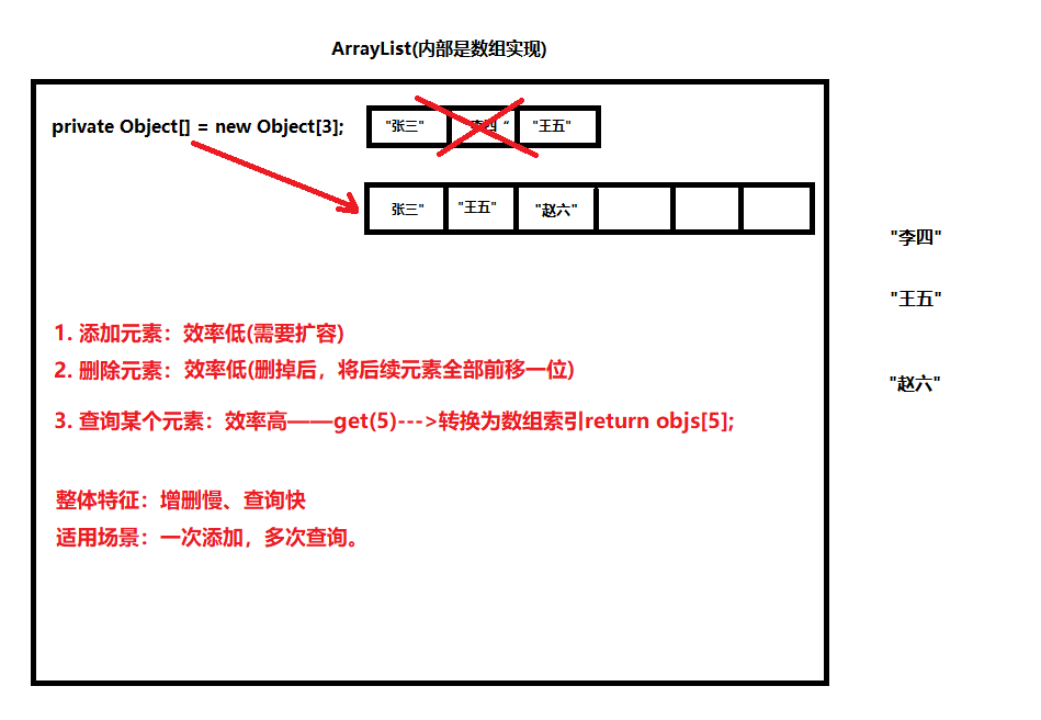1).特点:
1).有序的
2).可以存储重复元素
3).可以通过“索引”访问。
2).新增方法:
1).增:public void add(int index , E e):将参数e添加到当前集合的index位置。【插队-基础班学过】
2).删:public E remove(int index):删除index索引位置上的元素【基础班学过】
3).改:public E set(int index, E e):将index位置上的元素替换为e【基础班学过】
4).查:public E get(int index):获取index索引位置上的元素。【基础班学过】
这四个方法的共同的特点:形参都带“int index——索引值”!
3.2 List的子类:ArrayList集合【无新增方法】
 增强for和普通for的选择:<br /> 1).如果循环中需要用到“循环变量”,就使用“普通for循环”。<br /> 2).如果仅仅需要从头到尾遍历集合,可以使用“增强for”比较方便。<br /> 但不能用于赋值。
3.3 List的子类:ArrayList集合-数组结构
1).ArrayList内部使用的“数组”实现:<br /><br /> <br /> 2).特点:增删慢;查询快;<br /> 适用:一次添加,多次查询

